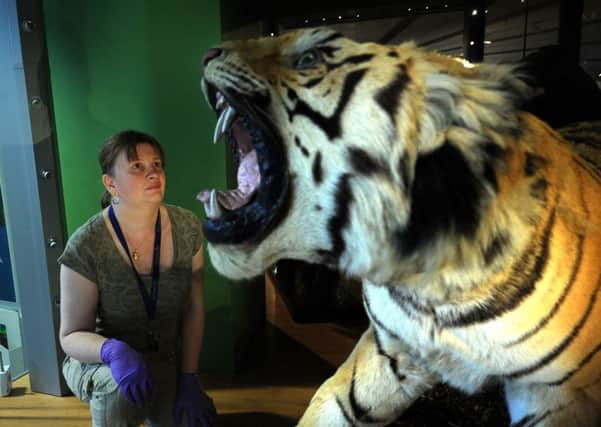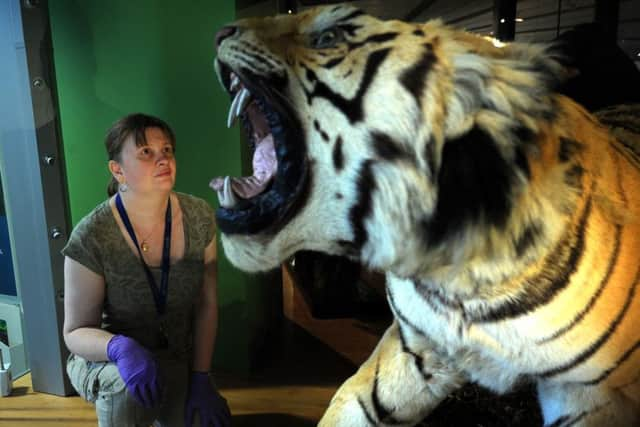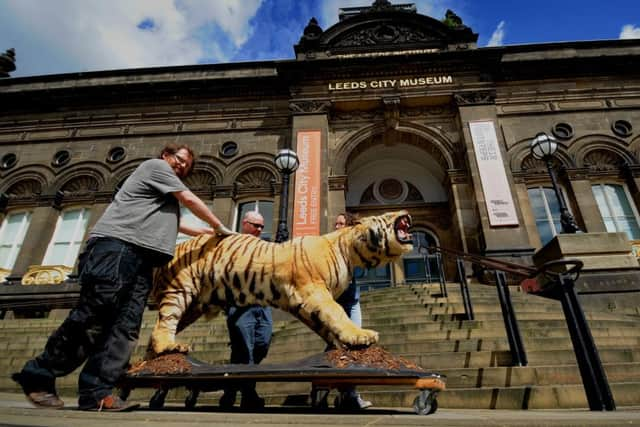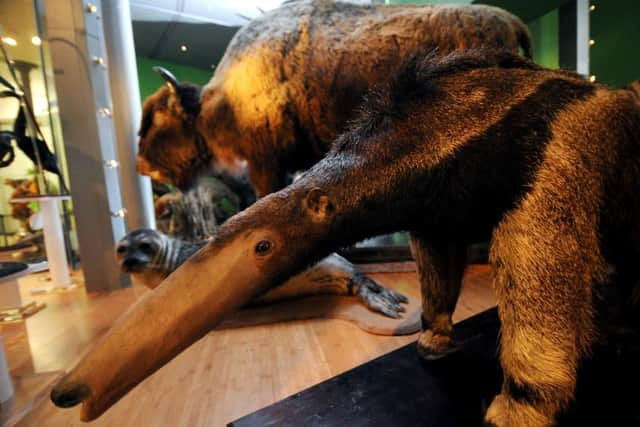Video: Animals came in two by two... after deep freeze at Leeds museum


The famous Leeds Tiger was just one of the animals making his way home to Leeds City Museum after being thawed out from a deep freeze.
The 170-year-old tiger was among a number of exhibits in the museum’s Life on Earth Gallery to be blitzed from the bugs.
Advertisement
Hide AdAdvertisement
Hide AdDuring a routine inspection the museum team discovered larvae of the Webbing Clothes Moth in some of their taxidermy cases.


As a precaution animals, including butterflies, bats and a giant anteater, were placed in a special deep freeze which destroyed the moths and eggs so they could be removed.
Rebecca Machin, Leeds Museums and Galleries’ curator of natural sciences, said: “These incredible specimens come from all over the world and are some of our most popular and historic exhibits, so we take plenty of precautions to prevent any pests from damaging them.
“Unfortunately, something will very occasionally slip through all our deterrents so to be safe, we removed a variety of animals, including our famous Leeds Tiger, to the quarantine facility at Leeds Discovery Centre.
Advertisement
Hide AdAdvertisement
Hide Ad“The sight of us taking these colourful, exotic creatures to and from the museum turned quite a few heads to say the least and people were really keen to hear about what we doing.


“I’m sure everyone will be just as excited to see us bringing them home and we’re looking forward to seeing them back on display where they belong.”
The Leeds Tiger was originally shot near Dehra Dun in the Himalayas by decorated soldier Major- General Sir Charles Reid in 1846 after becoming a nuisance to a nearby village.
In 1862, it was purchased by wealthy Leeds industrialist William Gott and presented to the Leeds Philosophical and Literary Society.
Advertisement
Hide AdAdvertisement
Hide AdOnce it was mounted, the tiger was said to be “unequalled in Europe” with reports at the time saying it was “fitly placed in the centre of the large zoological room and is always the most attractive piece in that collection.”


Also accompanying the tiger on his trip to the Discovery Centre were a black-headed oriole, a huia, which is now extinct, and a yellow-capped mannakin as well as an otter and a grey seal.
Councillor Brian Selby, Leeds City Council’s lead member for museums and galleries, said: “These incredible animal specimens have hundreds of years of natural history behind them and it’s fascinating to see the painstaking work that goes in to keeping them so well preserved.
“The Leeds Tiger in particular is one of our most iconic exhibits which has been enjoyed by generations of local museum-goers and I’m sure the people of Leeds will be very happy to see him back home.”
FACTFILE


Advertisement
Hide AdAdvertisement
Hide AdThe Leeds Tiger was originally shot near Dehra Dun in the Himalayas by decorated soldier Major- General Sir Charles Reid in 1846 after becoming a nuisance to a nearby village.
In 1862, it was purchased by wealthy Leeds industrialist William Gott and presented to members of the Leeds Philosophical and Literary Society.
Once it was mounted, the tiger was said to be “unequalled in Europe”.